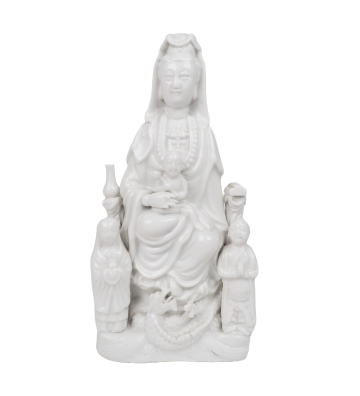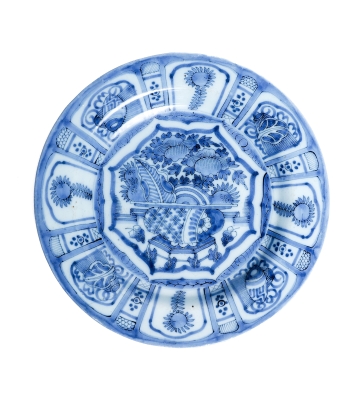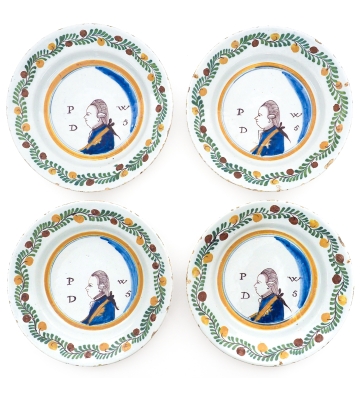A pair of Japanese Arita blue and white baluster jars with domed covers painted with panels of peony sprays divided by ruyi-bands. Made in the Edo Period (1603-1868) in the early 18th century, these vases were crafted for the export to the European market.
Two depicted elements are prominently present: The ruyi-bands and the peony flowers.
The word ruyi itself comes from the two characters rú (如) and yì (意), and together they literally mean “as you wish.” On the first glaze it looks like the Lingzhi (fungi) symbol, but it has another meaning. The symbol depicts the upper rounded part of the ruyi scepter: a Chinese ceremonial attribute and a sign of authority. According to superstition, the ruyi brings its owner good luck, blessings, and a long life. The ruyi motif spread across whole East Asia after the symbol became popular in the Tang dynasty (618-705).
The peony fdepicted between fences is known as the queen of flowers. It symbolizes royality but also spring. Historically, peonies were considered a symbol of high social status in China, as they were favored by the imperial court and often depicted in art and antiques. The flower's beauty and rarity made it a symbol of good fortune and honor, particularly in the context of marriage and family life.
Japanese porcelain was inspired by Chinese underglaze blue porcelain but usually has a darker and grayer appearance. The decoration and with that too the symbols on the porcelain Japanese wares were also often inspired of the Chinese culture, but this does not mean that these symbols were not already part of the Japanese culture. The peony flower and ruyi symbols were for example already introduced in Japan around the Chinese Tang dynasty (618-705)
In the mid-17th century, China's porcelain production declined due to social unrest. Dutch merchants, based on Deshima Island near Nagasaki, were allowed to trade with Japan and encouraged the emerging Japanese porcelain industry to meet European demand, filling the gap left by China.
Provenance: The property of a distinguished collector, removed from an 18th century Chelsea house on Cheyenne Walk.
Christie's Amsterdam 2008.


























